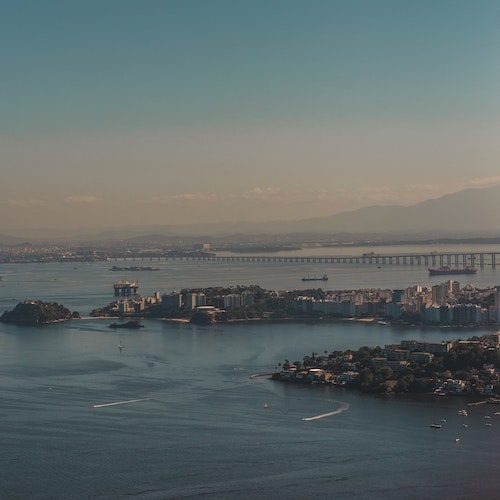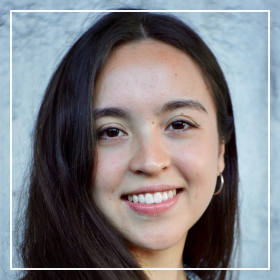November 2017
Dear Yaye,
I am writing to you because a week ago, Babacar returned. Babacar Diop, I think I might have written to you about him, do you remember? Or maybe I have not, if I am to be honest, I probably have never really thought much about Babacar, not before he came back. It was Tuesday, late in the morning, the sun was already up high, but the trees along the main streets provide shade, and in some streets, you get a breeze and can smell the salt in it. There were women with their plastic bags and kids in their arms walking down the pavement next to the big road, around us the sound of cars and motorcycles, an early 2000s hit playing inside a shoe store. Sometimes during that time of the day I just stay in one spot, later in the day I might move as I get restless. Anyway, that morning I was standing under a tree at the intersection close to Ponte Rio Niterói, a long bridge people cross every day as it connects Niterói with the Rio the newly arrived probably know about, the Rio with the famous Cristo, Copacabana, Ipanema… and so it is an important bridge, I guess. But then again it doesn’t mean too much to me, the Dahira is here in Niterói, I sell my goods here in Niterói, and so this bridge connecting our neighbourhood with others is not something I think about too often… Anyway, as I was saying, it was Tuesday morning last week, and Ousmane is messaging us in our WhatsApp group chat about Babacar returning. Ousmane arrived two years after me, and he is one of the newcomers who does not like me. Most Senegalese I know in Ri, live in Niterói, but he was directly incorporated upon his arrival into the housing system in Copacabana where street vendors are living a very different life, I am telling you, Mother. I could send you a postcard from that beach, but I do not think you would appreciate the look of the ladies on that beach very much, I would not want to offend you. Ousmane and I could meet of course if one of us was to cross the Ponte Rio Niterói, but I have only met him in person on a few occasions as he only rarely makes it to the meetings of the Dahira. But we are connected through the Dahira WhatsApp group and so I learnt through Ousmane that Babacar had returned. Babacar is the Dahira’s oldest member, he is older than you, maybe seventy years old, maybe older. As I mentioned before I never really thought much about Babacar, but of course I knew of him. I know Dahira members had been helping him with daily tasks and also financially ever since he arrived a couple of years ago at an already very advanced age, and I pitched in myself when our collective raised funds to buy Babacar’s tickets to make one final trip back to Senegal to see his family before it was too late. Our understanding, or at least mine, was, that he would stay there. So his return was surprising news for me – and many others, I’m sure. Why Babacar decided to come back I don’t know. But of course the Dahira will continue to care for him. And so Babacar has arrived again, to Rio de Janeiro, for the second time. But this time it will be different, as many things have changed over the past few years since I came here and since Babacar arrived for the first time. As I write these lines I realise just how much has changed and how much we have changed, and I really want to tell you about it, Mother.
Did you know that I am now a legal resident of Rio? This is a fairly new development, so I don’t think I have told you about it yet. My residence status has been ‘regularised’, and so has that of Babacar, Ousmane, Amadou and his wife, and almost 200 more. I first learnt about it in a WhatsApp group too, not the Dahira’s, but one called ‘Touba Brésil TV Rio de Ja[neiro]’ which is made up of members of the Dahira, the Senegalese Association of Residents in Rio, and others. You might be wondering how this came about, who advocated for us and who made this possible. I am happy to say that the Dahira has played its part in the matter. During a reception with the ambassador of Senegal, the Senegalese Association of Residents in Rio came together with the Consulate and Caritas, and the latter’s lawyers worked for the benefit of Senegalese newcomers here in Rio and successfully appealed for collective regularisation. Now this might not have been so easy if the Association had just been one among many different groups representing the Senegalese here in Rio. But because the Association and the Dahira work so closely together and agreed that this issue was a common priority for all, there was a strong case, or so I have been told.
I also want to tell you about the first màggal we held in 2017, which is to this day my most cherished memory I have made in Rio. Here too the Dahira members have worked together closely with the Association. You know I am not a mastermind or a man with too much ambition, but I think the màggal was possible thanks to the efforts of many members like me, who all helped in organising different things from pamphlets, to food and drinks and music. Mother, if you had been here, I know you would have been the most beautiful woman amongst them all, and that means something. All the women attended in elaborate turbans and the men in their most beautiful kaftans. We held the event at the Caminho Niemeyer, a very impressive and prestigious architectural landmark here, if I may say so. It is directly on the open shores of Niterói, facing Rio, and what better place for us to welcome Cheikh Mame Mor Mbacké. Everyone was so proud that day, we couldn’t stop talking about our marabout and reminded each other that in 2007 he had even made a speech at the UN, and now he was here. Oh mother, you would have been moved to hear him speak. I can see you before me, how you would have sat very still, your head held up high with your festive turban, eyes fixed and your face so beautiful as you would have been completely concentrated on our Mame Mor Mbacké. It was a full day with religious ceremonies and conferences, held both in Wolof and Portuguese. Had it been just us, the Dahira, organising the events, we might never have obtained the permission to hold the event at the Caminho Niemeyer. But because we organised it not just as the Dahira, but together with the Senegalese Association of Residents in Rio, we were able to hold this event which showed the transnational significance of our local Murid community here in Rio de Janeiro. Most attendants were Senegalese, though there were also Brazilian friends of the community, students who were hanging out nearby and the odd person passing by who joined us. There was also Dona Antônia, we call her our mãe brasileira, which I hope you wouldn’t mind. Senhora Antônia owns a wholesale business for sunglasses in Niterói and so you understand it is important to me and many other Senegalese street vendors to be on good terms with her. But that day I was not thinking much about this to be honest, I was too elated to have our marabout with us and I was so proud to be a Senegalese in Rio that day, business was the last thing on my mind.
I am also proud because I think over the past year I have never been called “Angolano”, which is what Brazilian’s call Africans in the city when they don’t know any better. But I think since the first màggal the Senegalese have slowly but surely become a respected community here in Niterói, and metropolitan Rio at large. I am here now, your son Ibrahima, not as an Angolano, but as a Senegalese with legal residency in Rio. When I think about it, I am almost surprised and astonished myself that we have achieved so much, that we have come to not only inhabit Rio de Janeiro but to become a legitimate part of it and are contributing something so valuable as the màggal in a space like the Caminho Niemeyer. After all, we are not a government with ministers, cabinets and funds who can draw up plans and then implement changes or additions to the city just because we decided to do so. We are not even just one organisation, there is the Dahira, the Association of Senegalese Residents in Rio de Janeiro, the Senegalese General Consulate as well as the ambassador, and if I think about it in this way, I am actually even more surprised that we have achieved the regularisation or were able to organise the màggal. Because truly, conflict and disagreements are quite common, especially in WhatsApp group chats holding Senegalese who are street vendors, shopkeepers, professionals, professors, old, young, religious, or not. But here we are, mother, Rio is different today because of us and I wish you would actually get this letter so you could be proud of your son.
I know you have passed long ago now. But that doesn’t mean you are not with me anymore. After all, I am here in Rio de Janeiro, as are Babacar and Ousmane and Amadou. And together with many others we have come to find our place in this already existing place, and Senegal is always with us and it is now also in Rio. Who would have thought?
Your son, Ibrahima
Explanatory appendix
This epistolary fiction is inspired by Tilmann Heil’s 2020 article “Interweaving the Fabric of Urban Infrastructure: Senegalese City-making in Rio de Janeiro” (International Journal of Urban and Regional Research, volume 45, number 1, pp 133-149). It depicts the first-person perspective of a Senegalese newcomer in Rio de Janeiro, a member of the Dahira, a street vendor in the streets of Niterói, the city mentioned in Heil’s article. Before starting to write I had to look up many of the Wolof words, I wanted to find out more about who Cheikh Mame Mor Mbacké was and googled pictures of the Caminho Niemeyer. Then I had to consider what a different format, a piece of fiction, could do that the original article did not. I thought about which anecdotes most impressed me, and that’s how I came to choose the story of the old Dahira member who returned to Rio as the starting point. What I try to bring home in my fictional piece is not only how the Senegalese diaspora in Rio was successful in making an imprint on Rio, but also how impressive that is considering that it is so different from the processes one might usually imagine in relation to city planning and the provision of infrastructure. I chose the format of a letter to the (deceased) mother at home as it allowed me to describe the events in detail and explain the situation to an outsider, but I also could allow Ibrahima to be open about his feelings and express both his astonishment about the success of their efforts and also his pride in what his community had contributed to Rio.
Featured image by Emmaus Studio courtesy of Unsplash.com.
This post is part of our second Academic Fiction thread – see Dennis Rodger’s introductory post.





